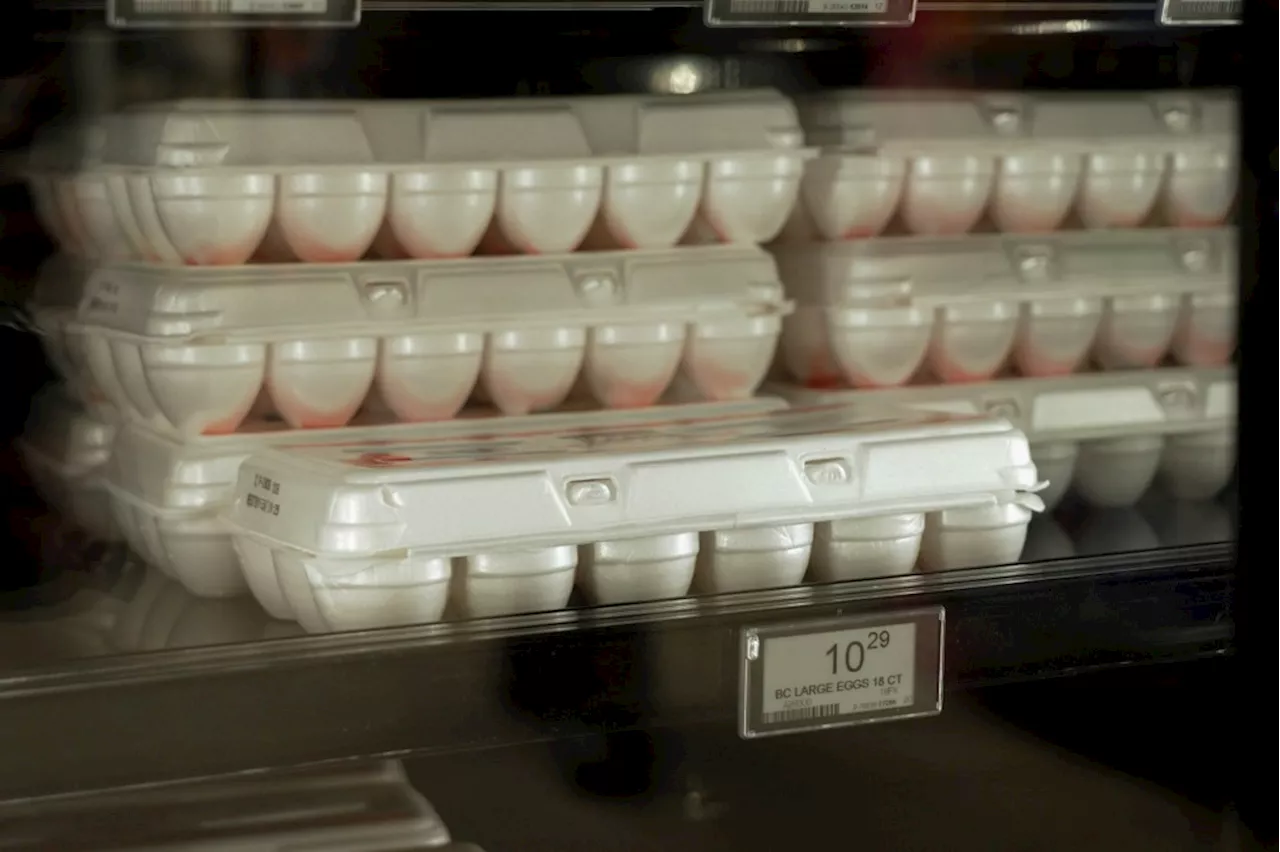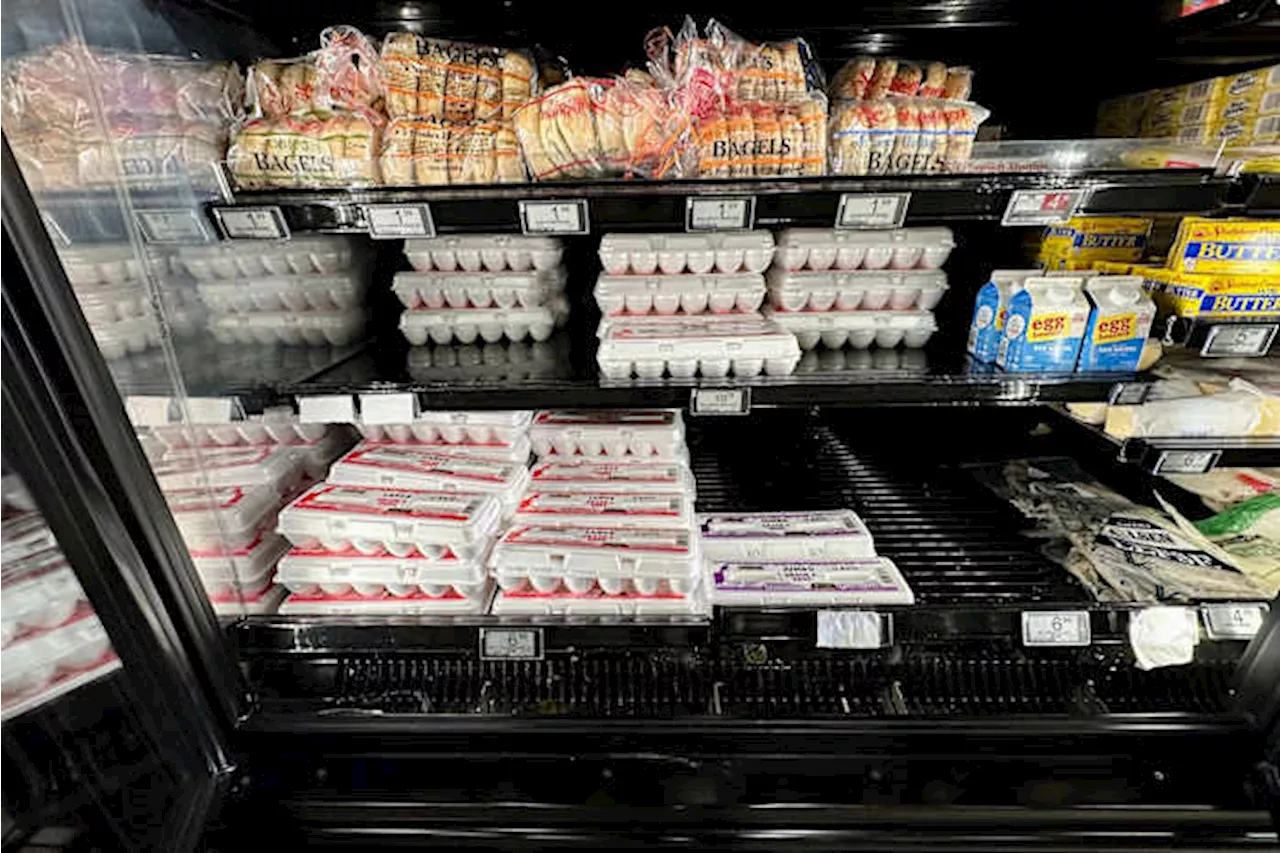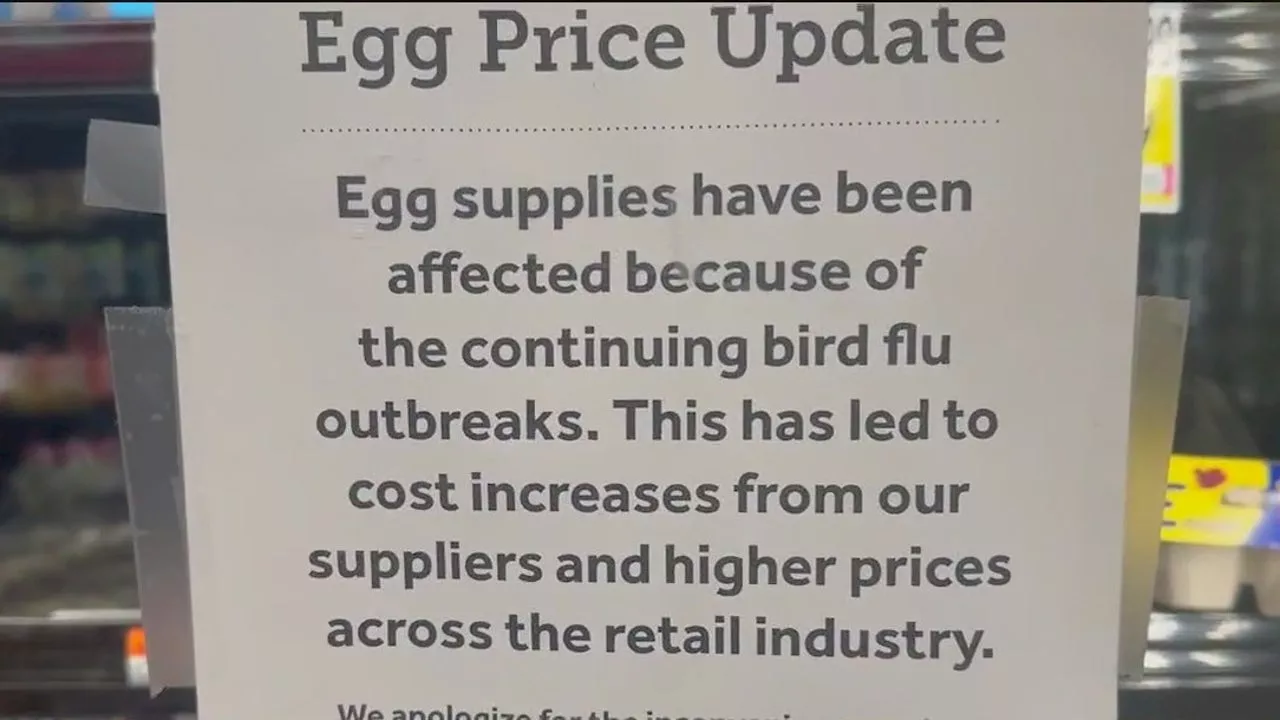Avian influenza outbreak forces farmers to cull millions of chickens monthly, leading to soaring egg prices and empty shelves in grocery stores. The situation is exacerbated by increased demand as Easter approaches, leaving consumers struggling to find affordable eggs.
Bird flu is wreaking havoc on the U.S. egg market, forcing farmers to cull millions of chickens each month and pushing egg prices to more than double their summer 2023 levels. This surge in demand as Easter approaches doesn't offer any relief in sight. The national average price per dozen hit $4.15 in December, a figure that, while not matching the record $4.82 set two years ago, is still significantly higher than pre- bird flu prices.
Shoppers across the country are experiencing the brunt of this crisis, with some encountering sky-high prices, exceeding $7.50 per dozen, while others find empty shelves in their local grocery stores. Organic and cage-free varieties are even more expensive, adding to the financial burden on consumers.Minneapolis resident Sage Mills, who recently purchased eggs to bake a birthday cake, expressed the widespread frustration. 'It's just robbery,' she said. 'Eggs used to be kind of a staple food for us, but now you know, you might as well just go out to eat.'The primary culprit behind this egg-stravaganza is the avian influenza outbreak that began in 2022. When the virus is detected on a poultry farm, the entire flock is culled to prevent its spread. Given that massive egg farms routinely house over a million chickens, even a few infections can cause a severe supply shortage. Compounding the problem is the lengthy timeframe required to dispose of carcasses, disinfect barns, and introduce new birds. The current outbreak has already claimed over 145 million chickens, turkeys, and other birds, with the vast majority being egg-laying chickens. Further exacerbating the situation are cage-free egg laws in 10 states, which set minimum space requirements for chickens or cage-free regulations for egg-laying hens. These laws have already taken effect in several states, including California, Massachusetts, Nevada, Washington, Oregon, Colorado, and Michigan.The spread of bird flu is primarily facilitated by wild birds, such as ducks and geese, during their migratory patterns. While the virus is fatal to a variety of animals, these wild birds can carry it without becoming ill, providing ample opportunity for the virus to mutate and thrive. Transmission can occur through droppings or any interaction between farm-raised poultry and wild birds. The virus can also easily hitch a ride onto farms through vehicles or on the boots of personnel. Adding another layer of complexity, the virus has recently found a new host in cattle, increasing the likelihood of its persistence and wider spread. Unlike poultry, cattle are rarely killed due to bird flu and are often only removed from farms after exhibiting signs of illness.Fortunately, health officials haven't observed evidence of the disease spreading from person to person. However, there have been cases of human infection, with one fatality reported since March. Most of these infections occurred in individuals working closely with sick animals. To mitigate the risk, many poultry farms have implemented stringent biosecurity measures, including truck washes to disinfect vehicles entering their property, mandatory showers and clothing changes for workers before entering barns, and the use of duplicate sets of tools to prevent cross-contamination. Some poultry farmers have even invested in lasers that emit beams of green light in random patterns to deter ducks and geese from landing on their farms. Dairy farmers are also taking precautions, isolating any sick cattle and conducting additional testing before moving animals off the farm, especially if there has been a nearby outbreak or if the cows are being sent to a meat processing plant.The USDA is actively testing milk and is exploring the possibility of future vaccines. However, vaccinating millions of chickens through shots is not currently practical, and other countries might refuse to purchase meat from vaccinated birds. Health officials emphasize that any sick birds or cattle are kept out of the food supply. Thoroughly cooking meat to 165 degrees Fahrenheit (74 Celsius) kills bird flu, E. coli, salmonella, and other potential pathogens. Pasteurization also effectively eliminates the virus from milk. Raw milk remains the only food product linked to illnesses associated with the current outbreak.The financial burden on farmers due to biosecurity measures is substantial but difficult to quantify. Minnesota turkey farmer Loren Brey shared his experience, stating that his small farm alone has spent hundreds of thousands of dollars on biosecurity over the past five years. He added that the daily time commitment to maintaining these measures is also significant. The USDA has allocated at least $1.14 billion to compensate farmers for birds that have had to be culled. While a similar figure for dairy aid is not readily available, USDA spokeswoman Shilo Weir noted that the department has also spent more than $576 million on its own response efforts. Mike Vickers, a manager at Sentyrz Liquor & Supermarket in Minneapolis, highlighted the impact on retailers. He explained that he's currently unable to stock any organic, cage-free, or brown eggs and is limited to selling large or jumbo eggs. He empathizes with customers facing these challenges, stating, 'It's the first time in my life that I've ever had to be kind of embarrassed on what I'm selling eggs for,' he said. 'And it's not our fault. We're paying today $7.45 for a dozen eggs. We're selling for $7.59. We're making $0.14. That's doesn't pay the bills.'
Food & Beverage Bird Flu Avian Influenza Egg Prices Food Supply Agriculture Biosecurity USDA Poultry Consumer Prices
United States Latest News, United States Headlines
Similar News:You can also read news stories similar to this one that we have collected from other news sources.
 Bird Flu Pushes Egg Prices to Record HighsThe ongoing bird flu outbreak is causing a severe egg shortage and driving prices to record highs in the US. The virus, which is deadly to poultry, has led to the culling of millions of chickens, impacting both supply and affordability. Shoppers are facing empty shelves and prices more than double the average. Organic and cage-free eggs are even more expensive. The situation is expected to persist as the demand for eggs increases closer to Easter.
Bird Flu Pushes Egg Prices to Record HighsThe ongoing bird flu outbreak is causing a severe egg shortage and driving prices to record highs in the US. The virus, which is deadly to poultry, has led to the culling of millions of chickens, impacting both supply and affordability. Shoppers are facing empty shelves and prices more than double the average. Organic and cage-free eggs are even more expensive. The situation is expected to persist as the demand for eggs increases closer to Easter.
Read more »
 Bird Flu Crisis Sends Egg Prices SoaringThe ongoing bird flu outbreak continues to wreak havoc on the global egg supply, driving prices to record highs and leaving grocery store shelves bare.
Bird Flu Crisis Sends Egg Prices SoaringThe ongoing bird flu outbreak continues to wreak havoc on the global egg supply, driving prices to record highs and leaving grocery store shelves bare.
Read more »
 Bird Flu Drives Up Egg Prices, Forecast to Increase FurtherEgg prices are soaring due to the impact of avian flu, which has decimated egg-laying chicken populations. The USDA predicts a 20% increase in egg prices by 2025, significantly higher than the projected 2.2% increase for overall food prices.
Bird Flu Drives Up Egg Prices, Forecast to Increase FurtherEgg prices are soaring due to the impact of avian flu, which has decimated egg-laying chicken populations. The USDA predicts a 20% increase in egg prices by 2025, significantly higher than the projected 2.2% increase for overall food prices.
Read more »
 Expert says bird flu impacting egg prices in AlabamaThe price of eggs is on the rise, and experts say they know why.
Expert says bird flu impacting egg prices in AlabamaThe price of eggs is on the rise, and experts say they know why.
Read more »
 Bird Flu Fuels Soaring Egg Prices, Leaving Shoppers in a PinchThe United States is grappling with a severe egg shortage and skyrocketing prices due to the ongoing bird flu outbreak. The crisis has left consumers facing empty shelves and inflated costs, surpassing double the average price. This article delves into the factors contributing to this situation, including the impact of bird flu on poultry populations, the role of cage-free egg regulations, and the financial repercussions for both farmers and consumers.
Bird Flu Fuels Soaring Egg Prices, Leaving Shoppers in a PinchThe United States is grappling with a severe egg shortage and skyrocketing prices due to the ongoing bird flu outbreak. The crisis has left consumers facing empty shelves and inflated costs, surpassing double the average price. This article delves into the factors contributing to this situation, including the impact of bird flu on poultry populations, the role of cage-free egg regulations, and the financial repercussions for both farmers and consumers.
Read more »
 Bird Flu Continues to Drive Up Egg Prices NationwideThe ongoing bird flu outbreak is causing a nationwide shortage of eggs, with prices soaring to record highs. Long Island residents are now paying up to $7.24 per dozen, a 52-cent increase from last week. The USDA reported 13 million bird flu cases in poultry last month, forcing many farms to euthanize entire flocks. Experts say the next few weeks will determine if egg supplies can recover or if further shortages and price increases are expected.
Bird Flu Continues to Drive Up Egg Prices NationwideThe ongoing bird flu outbreak is causing a nationwide shortage of eggs, with prices soaring to record highs. Long Island residents are now paying up to $7.24 per dozen, a 52-cent increase from last week. The USDA reported 13 million bird flu cases in poultry last month, forcing many farms to euthanize entire flocks. Experts say the next few weeks will determine if egg supplies can recover or if further shortages and price increases are expected.
Read more »
